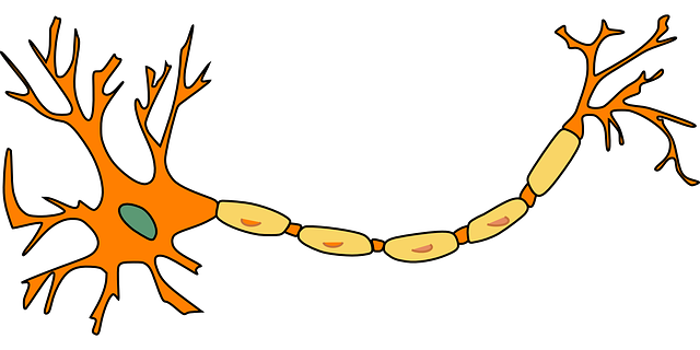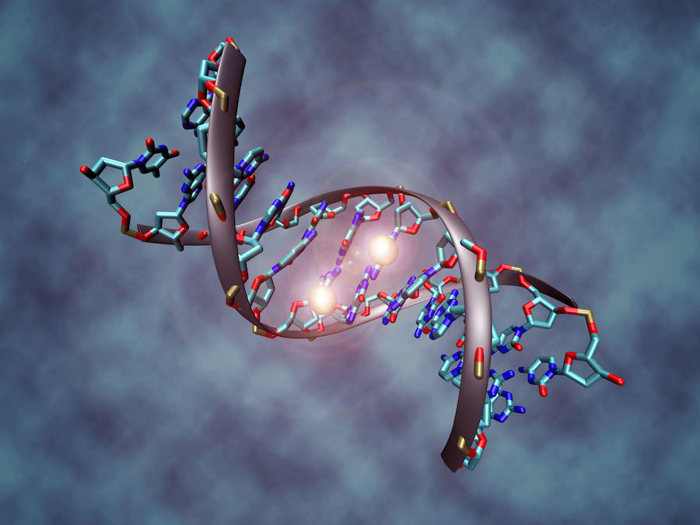
Can you tell someone’s age from their DNA?
February 25, 2015

- Related Topics:
- Aging,
- Epigenetics,
- Forensics
A curious adult from California asks:
"Can you tell someone’s age from their DNA?"
Until recently, scientists could not look at someone's DNA and figure out how old they were. Now you can, but it isn’t always super accurate.
Scientists noticed in 2013 that as people age, they build up the same set of specific DNA changes at the same times. So, 20-year-olds might get a certain change, 30-year-olds might have a different one and so on. Scientists can then look and see what changes you have. Oh, he has a set typical of a 53-year-old and she has a set typical of a 29-year-old. And so far, it has really worked!
This is a different way than scientists might have thought a few years ago. Back then scientists thought they might be able to tell someone’s age from how long his or her DNA was.
Each time one of our cells divide, the DNA in the cell gets shorter because a little bit of DNA is lost from each end. To keep important bits of DNA from disappearing, we have long stretches of DNA at each end called telomeres.
Scientists used to think if they could measure the length of a person’s telomere, they would be able to tell their age. After all, the more times a cell divides, the shorter its DNA will be. And the older you are, the more times your cells will have divided. Unfortunately, it wasn’t so simple.
It turns out that different people start out with telomeres of different lengths. You need to know how long they were to start with to figure out how old someone is. Most of us don’t have that information.
We now know it is much easier to tell a person’s age by looking at specific DNA changes that happen around the same time in most everyone. For the rest of the answer I’d like to focus both on what these DNA changes are and why they tend to happen at the same time to different people.

Genes Can be On or Off
Our DNA has the instructions to make us who we are. These instructions come in the form of genes. Each gene has the instructions for one small part of us.
Every cell has the same full set of instructions for building and running a person. But of course, not every cell looks and acts the same. A nerve cell is very different from a muscle cell!
A nerve cell looks different because it only has the instructions (genes) turned on that it needs to be a nerve cell. The ones specific for a muscle or a liver or any other cell are shut off. The same is true for each cell type.
Different cell types are not the only reason a gene may be on or off. Sometimes as you get older, you don’t need cells to do certain jobs anymore or they need new jobs.
For example, as we develop in the womb, all of our cells are growing and dividing like mad. But once we are an adult, these cells don’t need to do this anymore. In fact, if they do you can end up with cancer!
Cells control which genes are on and off in lots of ways. For this answer, we will focus on something called epigenetic marks.

Marking up the DNA
As mentioned above, epigenetic marks are one way the body turns on or off a gene. One way that cells can mark up their DNA is by adding small chemical groups to certain parts of it.
These chemical changes act like a switch that tells your body to turn a gene or set of genes on or off. So, if your body doesn’t need the gene to make liver cells anymore, one way it can turn it off is by adding these chemical groups to the DNA.
These epigenetic marks are also important because they are what help to make each of us different from one other. Each of us has our own set of epigenetic marks that tell us, in part, what to look like and who to be. They are what make each of us special!
It turns out that this is a big reason identical twins aren’t really completely identical. Even though they have the same DNA, they are different because they each use it slightly differently. They have a slightly different set of epigenetic marks.
But identical twins and everyone else do share some of these epigenetic marks in common. And some of them can be used to tell how old someone is.

The Marks of Aging
As you age, your body does not need all of its genes to be on all the time. As genes are no longer needed, epigenetic marks appear to turn these genes off. Because these genes are turned off at the same time for most people, these marks tend to appear at around the same time for everyone.
So, for example, when you turn 20 you might get certain marks and when you turn 30, you might get certain other marks. Because of this, most people in their early 20’s will have the same marks as each other just as most people in their late 50’s will have all the same marks as each other.
These marks are kind of like tree rings. By counting which marks or rings you have, scientists can tell your age. Scientists even think they may be able to use these marks to guess how old a person may end up living!

Another exciting use of this new discovery may be in catching criminals. There is a lot of research into predicting what a criminal might look like based on the DNA left at a crime scene. They are getting pretty good at predicting eye and hair color, for example.
Now they might be able to use the marks we have been talking about to figure out how old a criminal might be. Soon the police might know to look for a 40 year old redhead with blue eyes just from the DNA that was left behind. Watch out bad guys!
As you can see, DNA can tell you many things about your body including your age. Who knows what scientists will discover about DNA next!

Author: Rebecca Luiten
When this answer was published in 2015, Rebecca was a student in the Stanford MS Program in Human Genetics and Genetic Counseling. She wrote this answer while participating in the Stanford at The Tech program.
 Skip Navigation
Skip Navigation
